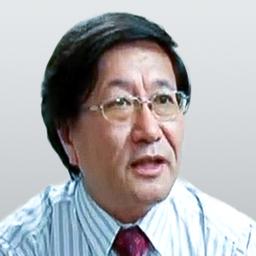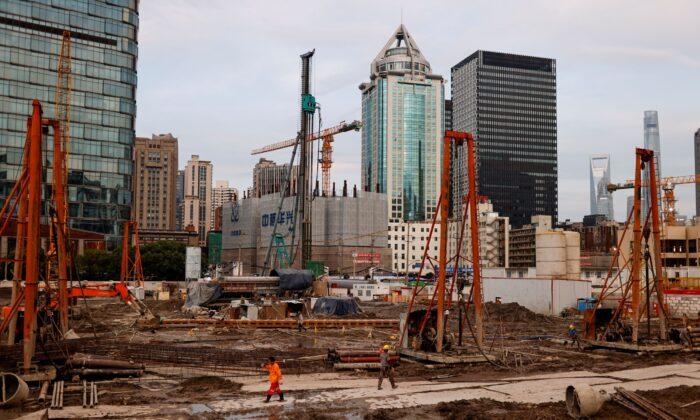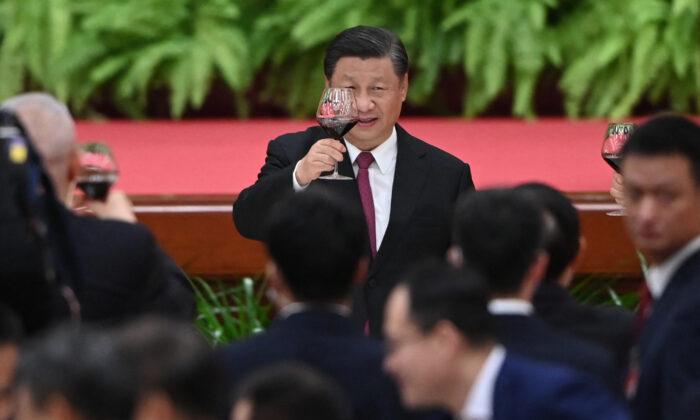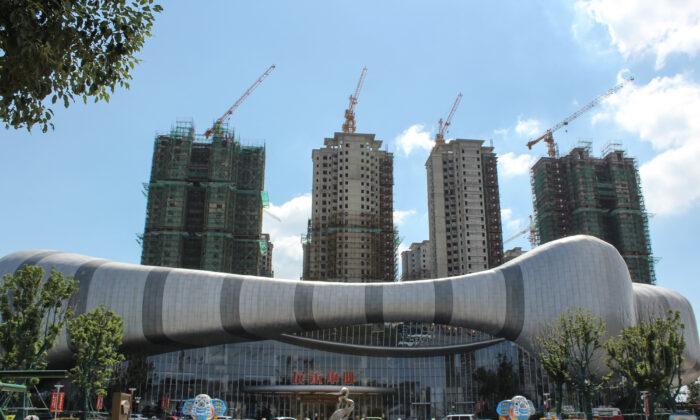Deng Xiaoping’s 1992 southern tour is generally referred to by official Chinese propaganda as a new starting point of reform. In fact, from the perspective of institutional transition, China’s socialist economic system officially came to an end in 1997, when China began to implement the privatization of state-owned enterprises (SOEs).
SOEs are considered one of the pillars of the socialist economic system. When most SOEs are privatized, the socialist economic system will completely disintegrate because an economic system characterized by private ownership is in fact capitalism.

But interestingly, the Chinese Communist Party (CCP) is in denial about its privatization policy. Although it actually did take place, the CCP has never admitted that it already completed privatization more than a decade ago. The authorities have covered up privatization with the term “SOE reform,” but deliberately avoided talking about what kind of system they were reformed to. In fact, there were only two possibilities for SOE reform: either complete privatization, turning it into a completely private enterprise, or partial privatization, allowing partial private ownership with the main share owned by the state.
1990s Banking Crisis
There was a reason for the government to choose privatization but deliberately remain vague about it.
Zhu Rongji, China’s premier at the time, took two factors into consideration when making the decision. First, SOEs had become heavy financial burdens for the government, leading the banking system to the verge of collapse. The economic reforms of the Deng Xiaoping era could not resolve the serious problems facing SOEs, which relied unconditionally on state bank loans. However, business conditions deteriorated, and many SOEs ceased to repay their bank loans and even interest payments. From the mid-1990s, a potential banking system financial crisis became increasingly apparent.
In the early 1990s, more than 20 percent of loans by four major state-owned banks were bad debts. In 1994, China’s banking industry suffered its first serious nationwide loss. By 1996, seventy percent of overall bank loans had become bad or overdue.
In the second half of 1997, to save the banking system from collapse, the government had to roll out a restructuring plan for SOEs—namely, privatization—to rid itself of most of the more than 10,000 SOEs and their “burden” on the state.
World Trade Organization Requirements
In addition, China was eager to join the WTO to expand exports. But the WTO had the precondition that China must establish a market economy within 15 years, abolish its planned economy, and implement privatization of SOEs. If China could not prove the implementation of SOE privatization, it would not be allowed into the WTO.
Since the government and the media covered up the facts about SOE privatization, people who never worked at SOEs were unaware of the meaning of “SOE reform.” In fact, the so-called “reform” was to allow the privatization of small and medium enterprises and allow large SOEs to be listed on the market for partial privatization.
The authorities let the directors and managers of SOEs implement “restructuring” and layoffs. Any social discontent and anger arising from the reform would thus be transferred to those people instead of to the government. Of course, these directors and managers did not take the blame for nothing; they were handsomely compensated.
The key question in this privatization plot was: who would buy these SOEs? Just as was the case in Russia, directors and managers of Chinese SOE did not have the millions or hundreds of millions in savings to acquire businesses, and foreign capital played a minimal role in the SOE privatization process. In this case, China’s SOE managers became the new owners, basically through illegal means.

Cover-up
This is the reason why the Chinese government has not allowed domestic researchers to study the process of SOE privatization, and Chinese media simply does not report the truth.
Ironically, despite being a forbidden topic for Chinese media and researchers, it is open to outside researchers. Foreign researchers, through international organizations such as the World Bank, could enter China freely and conduct nationwide sample surveys on SOE ownership status after privatization. Over the past decade, those researchers have published a number of books in English on the results of China’s privatization. However, none of these books were translated or published in China.
The Chinese government allowed foreign researchers to study SOE ownership in order to provide information on the progress of privatization in China to the World Bank and other international organizations and to pave the way for China’s entry into the WTO.
Since privatization of China’s SOEs has already been revealed to the world, the Chinese government’s attitude inside China can only be called self-deception.
Dr. Cheng Xiaonong is a scholar of China’s politics and economics, based in New Jersey. He is a graduate of Renmin University, where he obtained his Masters degree in economics, and Princeton University, where he obtained his doctorate in sociology. In China, Cheng was a policy researcher and aide to former Party leader Zhao Ziyang, when Zhao was premier. Cheng has been a visiting scholar at the University of Gottingen, Germany and at Princeton, and served as chief editor of the journal Modern China Studies. His commentaries and columns regularly appear in overseas Chinese media.
See the first essay here.





